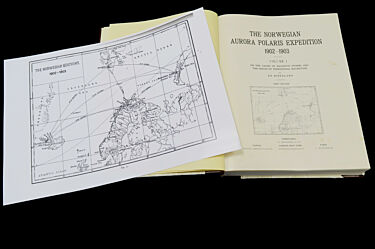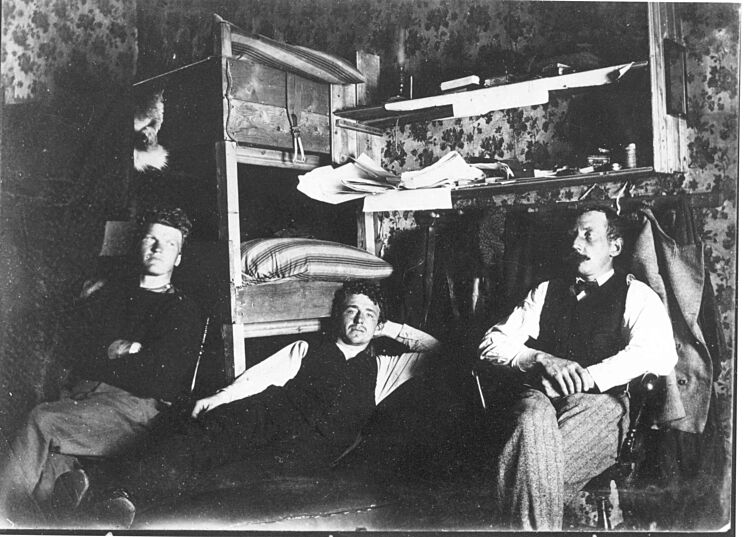
Object of the month: “The Norwegian Aurora Polaris Expedition 1902-1903” – physicist Kristian Birkeland’s major scientific work
In 2017 Alta celebrates the 150-year anniversary of the birth of Kristian Birkeland (1867-1917) who in the words of his English biographer Lucy Jago «sacrificed love, happiness and sanity to unlock the secrets of space». The object of the month is a rare leatherbound copy of Birkeland’s «The Norwegian Aurora Polaris Expedition 1902-1903», by many considered to be his most important publication.
Birkeland used the word «polaris» and not «borealis» in the title to emphasize that this atmospheric phenomenon can be seen in two versions, the Northern lights around the North Pole and the Southern lights around the South Pole but that they are in fact the same light.
The book was a gift to the museum from professor Alv Egeland at the University of Oslo. Birkeland published more than 70 scientific treatises. «The Norwegian Aurora..» was published in two volumes in 1908 and 1913 respectively.
It wasn’t due to laziness that it took Birkeland 5-10 years to publish research done in 1902-1903. On the contrary. The delay was because Birkeland worked on so many different projects at the same time. He patented 59 inventions for research and industry.
Kåfjord in Alta – the centre of Birkeland’s network 1902-1903
The research published in this book was done partly in Birkeland’s laboratory in Oslo and partly at 4 stations established by Birkeland on Iceland, Novoja Zemlja (Russian Arctic island), and Spitsbergen and at Kåfjord in the innermost part of the Alta Fjord. Measurements from 23 other worldwide stations were also incorporated into this study.
Some people may wonder why Birkeland called his station in Alta “Kåfjord” and not “Haldde”. He is best known here for the founding and building in 1899 of observatories on the mountains Haldde and Talviktoppen near Kåfjord. But Birkeland’s base in 1902-1903 was in fact down in Kåfjord and not on Haldde 900 metres above sea level.
«Northern lights research» a hundred metres into the copper mines
The subtitle of the book, «On the Cause of Magnetic Storms and the Origin of Terrestial Magnetism» helps us to understand why the research team did measurements in the mines. Birkeland was concerned with showing the connection between the Sun’s activity, the Earth’s magnetic field and the aurora. The scientists visited Haldde and stayed a few weeks on Talviktoppen. But the main research was done down in Kåfjord and partly a hundred metres into the mines.

Solar storms – the origin of the northern lights
That the origin of the northern lights lies in currents from the Sun was strongly opposed by the Royal Society in Great Britain. Birkeland studied in Paris and most of his scientific treatises were published in French. He published his perhaps most important work in English in an attempt to get recognition in the British scientific community. But even though most of Birkeland’s conclusions were correct, British scientists never accepted them in his lifetime.
Written by curator Hans Christian Søborg.